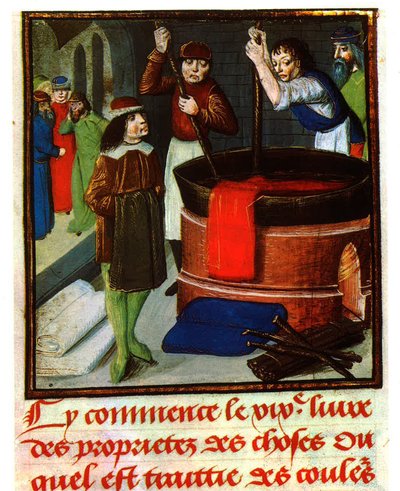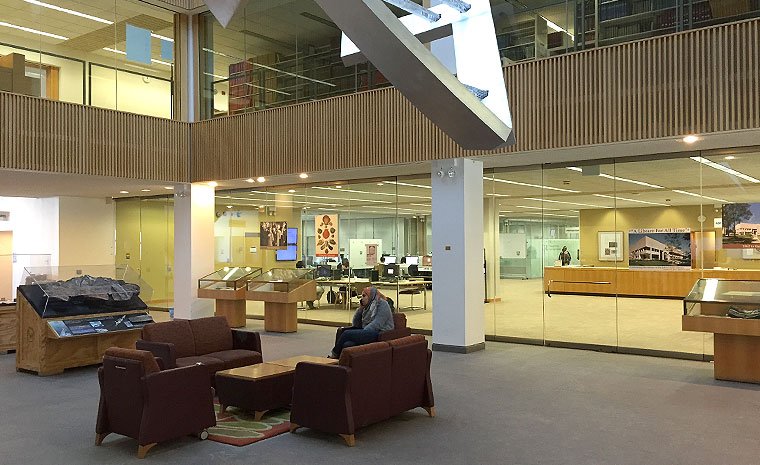Illustrative Paintings
While the color pigments used in Egyptian wall paintings and medieval illuminations have lasted for centuries, textiles prove far more fragile and often some of the best evidence of the practice of dyeing textiles comes from these painting records. This wall painting from the tomb in Beni Hasan shows women in color patterned clothing.
The scene of a medieval dyeworks, while illustrates several important points. The medieval dyers trade was regulated by guilds which kept close watch over the secrets of the process. There were generally two different dye guilds, called the greater and lesser arts, the greater covering the more difficult bright and lightfast dyes (madder, cochineal, kermes, indigo, and weld) which produced luxury goods on high quality cloth as is illustrated here. The lesser covered the larger market of inexpensive dyes used on cheaper fabrics. These guilds were typically subdivided further so that individual dyeworks specialized in one or two colors. Dyers of red would also do yellow. Dyers of blue might also do green or black. It would be unlikely for a dyer of red to also dye blue as is shown in the illumination.

Robinson, Stuart. A History of Dyed Textiles: Dyes, Fibres, Painted Bark, Batik, Starch-Resist, Discharge, Tie-Dye, further Sources for Research. Cambridge, MA: MIT Press, 1969. TP897.R661 Crerar Library.
